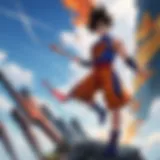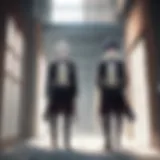Exploring the Depths of Crazy Anime: An In-Depth Analysis
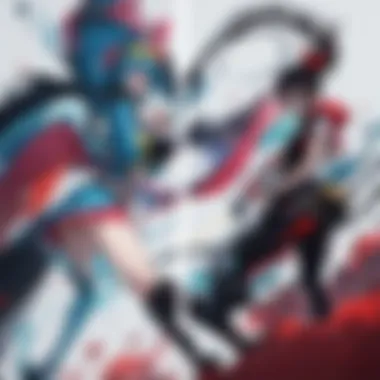

Prologue to the Series
Crazy anime holds a special place in the vast landscape of Japanese animation. This subgenre often features wild storylines, visually distinct styles, and offbeat characters. These characteristics challenge conventional storytelling and create a unique viewing experience that has captivated audiences around the globe.
One notable example in the world of crazy anime is “FLCL”, also known as “Fooly Cooly.” Originally released in this format in 2000, this OVA series combines surreal storytelling with eccentric animations by Gainax. From the beginning, “FLCL” diverged from typical narratives and elevated a blend of action, humor, and insight into adolescent struggles. With only six episodes, its brevity enhances the intense emotional experiences portrayed throughout.
The reception of this series has been largely positive, obtaining a cult following within anime communities. Its unconventional approach to anime combines various genres and leaves viewers questioning the boundaries of traditional growth and character development. This encourages a sense of engagement that resonates well with fans who appreciate something different.
Context and Background
Beyond its bold animation style and erratic plot, stabilizing themes convey in “FLCL” touch on topics of identity, emotion, and the harshness of growing up in today’s world. The tonal shifts found within the series reflect societal pressures relevants to formative years. As far as impact, “FLCL” proved influential in shaping viewers' expectations of non-traditional narratives in anime, with multiple series thereafter nodding to its whimsical oddness.
In subsequent sections, we will delve deeper into anime as a genre, unpack other series with similarly unconventional approaches, and explore their societal implications while analyzing viewer engagement and reactions. This analysis illuminates why these captivating stories hold a resonating place within the anime realm.
Understanding Crazy Anime
Crazy anime invites exploration into a unique realm within the broader anime landscape. It distinguishes itself through unconventional narratives, atypical characters, and bold animation styles. Understanding crazy anime is essential, as it allows one to appreciate its often-nuanced truths depicted through absurdity and humor. It reflects not only artistic freedom but also the societal context from which it emerges.
Through defining the genre, one begins to uncover the underlying influences that shape its projects. Comprehending these characteristics proves critical in identifying the thematic exploration that often transcends self-indulgence. Ultimately, a grasp of crazy anime opens up discussions about the implications it has on culture and fandom.
Defining the Characteristics
Crazy anime is defined by a series of features that delineate its identity. Unpredictability stands at the forefront, allowing for narrative directions that frequently disregard conventional storytelling wisdom. Characters can be idiosyncratic, providing a contrast to familiar archetypes in mainstream genres. Unique circumstances serve to push plots to absurd conclusions. The soundtracks and animation styles often complement this madness. Many series embrace a nonlinear approach, layering complexities that invite deeper dissection. Central themes within the plots tend to explore identity crises, relationships driven by quirks, or confrontational societal norms. Understanding these traits reveals why this sub-genre captivates attentions while also showcasing its uniqueness in storytelling.
Historical Context
To fully grasp today’s crazy anime, one must consider its origins. This genre has roots that trace back to influences from various art movements and storytelling traditions. The late 20th century saw a shift towards more avant-garde works in both animation and broader media. Releases like **
Notable Examples of Crazy Anime
The exploration of notable examples of crazy anime serves as a pivotal foundation in understanding this unique subgenre. These standout titles encapsulate the essence of what makes crazy anime truly distinct. Identifying memorable series not only enhances our view of the genre's artistic and thematic diversity but also allows for deeper reflection on their cultural significance. Each series chosen here contributes uniquely to the larger narrative of crazy anime. Their plots defy conventional storytelling, presenting viewers with vivid illustrations of absurdity and innovation.
Showcase of Iconic Series
Series One: FLCL
FLCL, often regarded as one of the quintessential crazy anime, emphasize a few key aspects. First, its plot revolves around a young boy named Naota and his incidental encounters with an otherworldly being on a Vespa. The show perfectly exemplifies chaotic narratives filled with surreal humor and high-energy visuals. Importantly, FLCL contributes to our overall understanding of crazy anime by dismantling traditional storytelling structures. The art style, heavily influenced by jerkiness and limited animation, delays viewer expectations, making each sequence compelling. That modo is both beneficial and limiting: it invites viewers into an energetic ride while making it difficult to follow for some. However, its impact resonates greatly within the anime community.
Series Two: Paranoia Agent
Paranoia Agent is a profound example of how crazy anime can challenge and critique social norms. The series examines urban life through the lens of collective anxiety symbolized by the story’s antagonist, Lil' Slugger. This series stands out primarily due to its narrative complexity and stylistic variations. Each episode invites different perspectives, enhancing the show's critical lens on Japanese society such as stress and yearning for escapism. The unique feature here lies in its multi-faceted storyline approach, allowing various angles to emerge. Truly, its ability to address darker subjects while employing a distinctive absurdity presents both a significant opportunity and a potential drawback; not every viewer might appreciate the hidden depth.
Series Three: Konosuba: God's Blessing on This Wonderful World!
Konosuba offered a refreshing take on the fantasy genre. Unlike many standard isekai narratives, Konosuba showcases absurd humor through exaggerated character tropes, presenting interruptions in a subclassical heroic journey. This deconstruction of fantasy elements distinguishes it as popular within the subgenre. Its characters are not only peculiar but reflect deeply human flaws that resonate with everyday audiences. The combination of vibrant character designs and comedic interactions establishes its charm as a gateway for newcomers. Yet, one caution for potential viewers is its episodic nature may sometimes sacrifice ongoing plot coherence for humor.
Emerging Titles
Recently, the landscape of crazy anime has expanded, introducing innovative narratives that capture unique dystopian and fantastical elements. Newcomers such as Baccano! and Jujutsu Kaisen generate varied storytelling experiences while maintaining core characteristics recognized in established works. Their representations of reality touched by chaos establish a captivating surface while delving deeper. These fresh titles indicate a shifting trend with dynamic examples and plot twists. However, not every viewer may appreciate the quirky toned or nuanced humor, as individual tastes greatly impact reception. The managing of unique characterization alongside professional animation continuously寻找 fresh pieces encapsulating core absurdity often present in past series.
Themes and Motifs
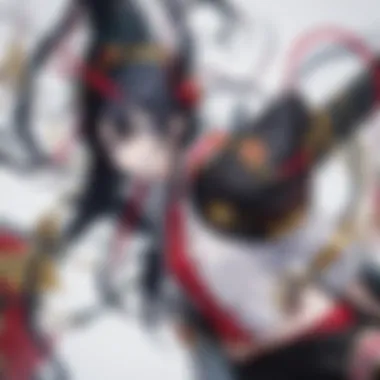

Understanding themes and motifs is crucial in the analysis of crazy anime. These aspects help viewers decipher the complexities woven into the stories. They serve as lenses through which viewers can explore the underlying messages and emotions that the creators intended to convey. By focusing on specific themes, the essence of why certain series resonate with audiences comes to light.
Identity and Self-Discovery
Identity and self-discovery often play central roles in crazy anime. Characters grapple with profound questions about their true selves, motivations, and purposes. This quest is not only a narrative device but a reflection of real-life experiences. For example, shows like Paranoia Agent dive deep into the psyche of characters, revealing insecurities and fears. These stories often resonate with viewers who may relate to the characters’ struggles on a personal level, making the themes of identity deeply impactful.
Elements that reinforce this theme include:
- Characters' internal monologues convey their evolving thoughts and feelings.
- Interactions between characters reveal contrasting perspectives on identity.
- Plot developments that challenge characters’ self-perceptions encourage growth.
This exploration allows viewers to reflect on their identity, making it a significant theme in the world of crazy anime.
Absurdity and Humor
Crazy anime frequently thrives on absurdity and humor. These elements contribute to a unique viewing experience that challenges conventional storytelling norms. By presenting exaggerated scenarios and bizarre characters, a series breaks away from predictable narratives. Notable series like KonoSuba: God's Blessing on This Wonderful World! showcase humor rooted in twisted logic and silly situations.
Absurdity adds value by:
- Acting as a coping mechanism for real-world stress and anxieties.
- Encouraging creativity in writing and animation, igniting fresh ideas.
- Setting the tone for entertaining yet thought-provoking discussions.
As viewers laugh at the absurdity, they also engage with deeper social critiques peppered throughout the humor.
Social Commentary
Social commentary often manifests subtly yet powerfully within crazy anime. Many series reflect cultural norms, societal pressures, and contradictions present in modern life. Shows like Ping Pong: The Animation probe into the futility of competition and the ambiguity of success, prompting audiences to think critically about conventional expectations.
Key aspects of social commentary include:
- Narrative arcs that challenge stereotypes, pushing against societal boundaries.
- A reflective examination of human interactions, often illustrating more profound truths.
- Character experiences which model subtle critiques of everyday life.
Through this lens, viewers not only entertain themselves but also comprehend their surroundings more sharply. Crazy anime invites its audience to reflect and critique society in distinctive ways, posing challenging questions while entertaining them through vivid storytelling.
Cultural Impact of Crazy Anime
The cultural impact of crazy anime secures its place in discussions about the uniqueness of the medium. This subgenre, marked by its unexpected narratives and colorful characters, often mirrors trends and contradictions found within society. By engaging viewers through absurdity, humor, and eccentric plots, crazy anime pushes boundaries in ways typical animation seldom achieves.
Influencing Trends in Animation
Crazy anime has significantly influenced various trends within the animation industry. By challenging conventional narratives, this style has opened avenues for new forms of storytelling. Many works have embraced experimental techniques, showcasing diverse art styles.
- This inspires other creators and studios to take artistic risks, breaking from predictability in mainstream animation.
- New genres have gained traction, blending elements of comedy, drama, and surrealism in innovative ways.
- The mesh of visual storytelling with innovative themes also sets a new benchmark for audience expectations.
Example Titles
Showa Genroku Rakugo Shinju, for instance, introduces a narrative rhythm not often encountered in traditional anime. Its focus on the art of Rakugo harmonizes classic storytelling with modern animation techniques.
Crazy anime reshapes perspectives, highlighting the power of unconventional narratives.
Global Reception
Over time, crazy anime has not only gained momentum within Japan but has also captivated worldwide audiences. Various factors contribute to this broader acceptance:
- Accessibility of Streaming Platforms: Anime became more accessible through services like Crunchyroll and Funimation, allowing international viewers to engage with eccentric narratives easily.
- Subcultures and Themes: Themes resonating with the struggles of modern life, such as alienation or existential inquiries, forge a connection beyond geographical boundaries.
- Award Recognition: Titles recognized at awards shows worldwide bolster credibility, showcasing the craftsmanship behind crazier narratives.
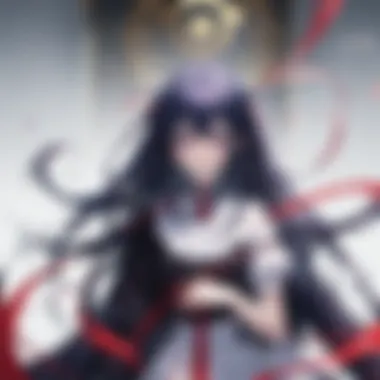

This unique combination of elements enables an appreciation that bridges cultural divides.
Fandom and Community Interaction
The role of community interaction also underscores the cultural footprint of crazy anime. Fandoms form allowing deep discussions and creative outlets:
- Online Forums: Platforms like Reddit encourage widespread discussions about plot intricacies and thematic interpretations. Fans share theories, offering differing insights, which fosters an engaging dialogue.
- Fan Art and Creations: As craziness coercively inspires artistic engagement, artwork thrives on sites like DeviantArt, showcasing personal relationships to the art.
- Conventions and Gatherings: Events like Anime Expo welcome fans but provide a space for collaboration and sharing of passions and lunacies long considered niche.
Such interactive communities enhance the anime experience, creating places for enthusiasts to engage on multiple levels.
In summation, the cultural impact of crazy anime extends beyond mere entertainment. Its influence on animation trends, global acceptance, and fandom interaction illustrates a complex but compelling facet of modern media. By shepherding innovations and forging community ties, this subgenre leaves a pervasive mark. Just as audiences delve into these programs they also peek into inventive lifestyles, offering reflections on culture with creativity.
Character Archetypes in Crazy Anime
Character archetypes play a vital role in anime narratives, especially in the subgenre of crazy anime. These archetypes serve as a framework that not only provides a roadmap for storytelling but also helps define the relationships between characters. In crazy anime, the archetypes can often be exaggerated, leading to a unique set of quirks and distinctive traits. By examining these archetypes, we gain deeper insight into the motivations of characters, their interactions, and how they reflect societal values.
The eccentricities found in these characters contribute a monumental factor to the overall narrative dynamics. They enhance emotional resonance, engender humor, and challenge ideas of normality. Allowing audiences to relate to or laugh at these characters fosters a rich cultural dialogue about acceptance and differences, both within the narrative and in the audience's reality.
The Eccentric Protagonist
The eccentric protagonist is a defining characteristic of crazy anime. This trope sets the narrative tone and dictates the development of the plot. These protagonists often harbor traits that defy social norms and expectactions. Such characters tend to exude an intensity or unpredictability that keeps viewers engaged in the storyline.
These individuals may be flamboyant, highly intelligent yet socially awkward, or embody odd philosophies that clash with traditional values. Through their journey, they challenge norms not only within their own plots but also in larger cultural contexts. Notable examples include characters like Ikki from
The Role of Animation Style
Animation style is a fundamental aspect of crazy anime. It shapes not only how stories are told but also how they are received by audiences. In this subgenre, visual representation often aligns closely with narrative intent. Animation serves varied functions, from complimenting wild storylines to heightening emotional stakes.
Visual Innovations
Visual innovations are a defining feature of crazy anime. The evolution of technology allows creators to experiment with styles and techniques that capture the imagination. Unique visual elements break away from traditional portrayals or develop entirely new aesthetic values.
For example, “FLCL,” directed by Kazuya Tsurumaki, employs rapid shifts in animation style to convey the protagonist's chaotic emotional state. Such flexibility instills a mindset that embraces unpredictability, an essential characteristic of the overall genre. Moreover, innovators in animation can create visuals that mix 2D and 3D elements. This combination allows for significant depth, enhancing viewer immersion.
Additionally, techniques like color distortion, exaggerated character designs, or surreal backdrops commonly appear in exemplars of the genre. These elements reinforce key narratives while emphasizing themes like identity and social commentary. Innovators push the boundaries in aesthetics, which cultivates enthusiastic discussions and appreciation within the anime community.
Color Palettes and Their Significance
The choice of color in crazy anime is deeply significant. It usually reflects the tone and emotional texture of the storyline, serving as a visual tool to impact viewer perception. Bright, clashing colors may evoke feelings of joy and chaos, while somber, muted hues can signal deeper themes and character internal conflicts.
For instance, “The Melancholy of Haruhi Suzumiya,” employs a range of colors that transition depending on the character's state or the scene's intensity. Such strategic color usage helps in conveying subtext and maintaining audience engagement throughout potentially convoluted plots.
In certain anime, colors can delineate between various narrative subplots. Characters associated with particular color schemes often display distinct personality traits, aiding viewers in processing complex narratives efficiently. The application of color palettes, therefore, serves both a stylistic and functional purpose in the storytelling mechanism.
The interaction of bold visual choices, especially the use of vibrant color palettes, significantly enhances the aesthetic value of crazy anime.
In summary, animation styles in crazy anime contribute to not only the visual identity of a series but also its emotional weight and insights into broader societal context. Given these elements, it becomes evident that animation goes beyond mere presentation—it transforms into a vital narrative device in its own right.
Music and Sound Design in Crazy Anime
The role of music and sound design in crazy anime is often underestimated. Music accompanies the visual elements, background actions, and character developments. It defines moods and atmospheres, shaping how viewers experience stories. Crazy anime thrives on emotionally charged and unpredictable narratives, making a compelling audio landscape all the more vital.
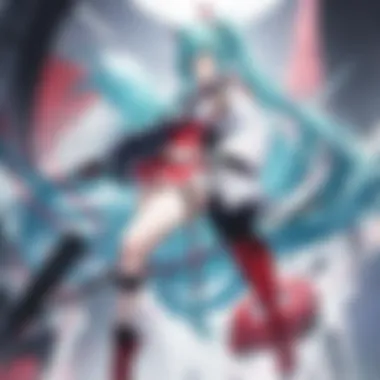

Soundtracks That Define Mood
Effective soundtracks are crucial for establishing the emotional tone of scenes. The right musical selection can amplify tension, foster humor, or even underscore moments of tragedy.
Some series are notable for earning recognition through their soundtracks alone. For instance, Cowboy Bebop and its jazzy influence force a lively atmosphere, anchoring the series in a distinct emotional narrative. Similarly, the soundtrack of Kill la Kill supports high energy and chaotic action sequences, pushing viewers to feel the intensity of battle.
Moreover, unique instruments and unexpected sound choices set scary or nonsensical tones that align with what one might find atypical or “crazy” within this anime realm. Here are a few observations about soundtracks within crazy anime:
- Diverse Genres: Soundtracks may incorporate various genres, from orchestral to rock to chiptune, creating a blend that surprises audiences.
- Theme Repetition: Songs often loop throughout episodes. This provides familiarity, making immersive scenes unforgettable.
- Character Themes: Individual characters may have their themes that reflect their idiosyncrasies or development arcs.
Music has significant power. It can elicit emotions, convert endings into poignant moments, and surprise with sudden shifts enhance audience engagement.
Thematic Elements in Audio
Thematic elements in sound design greatly influence the perception of narratives in crazy anime. One aspect is how ambient sound helps build a surreal environment. For instance, deliberately out-of-tune notes heighten discomfort, making viewers unsettled yet intrigued. Characters may blend with sound design, as color palettes do in visuals.
Consider how foreshadowing through audial clues can change interpretations of stories. At times, background sounds serve as hints to pivotal moments. Unique usage of audio techniques can also steer the direction in which viewers find themselves captivated.
Critical examination may reveal that certain episodes rely heavily on not just the execution but the accompanying audio narrative to set the entire tone of the show. After understanding these facets, watchers begin engaging more profoundly with the material presented. The elements mentioned contribuate to a layered storytelling method that resonates on multiple levels.
Viewer Engagement with Crazy Anime
The realm of crazy anime invites viewers to engage in ways that enrich their viewing experience. Unlike mainstream narratives, these series often leave much to decipher, encouraging audiences to analyze plots and themes. Theres a complexity that demands more than passive watching; it requires active interpretation. This facet is critical in understanding why certain anime resonate with fans, reflecting broader societal observations and human emotions.
The engagement with crazy anime extends beyond mere consumption. Fans foster digital communities where discussions flourish. These interactions fortify the connection audiences have with the genre and introduce alternative perspectives. Unpacking the viewer's contribution to these dialogues adds essential layers to any analysis of anime’s cultural context.
Online Discussions and Forums
Sites like Reddit and dedicated anime forums serve as thriving hubs for discussions about crazy anime. In these spaces, fans dissect episodes, engage in debates, and even share theories about character development and plot twists. Participating in such discussions enhances viewers’ grasp of series, as insights from others propel a more rounded understanding.
Furthermore, online discussions often mirror global public conversation around anime culture. This dialogue acts as a barometer, reflecting not just the success of certain series, but also shaping genre development. For instance, discussions often highlight niche themes that might go unnoticed by casual viewers, promoting discussions around deeper narrative structures.
Fan Creations and Contributions
The act of creating fan art or fan fiction is a significant aspect of viewer engagement in the anime community. These contributions are more than just personal responses to series; they represent a broader discourse on character ambiguity or thematic explorations. Fans utilize various platforms, from DeviantArt to Tumblr, to share their interpretations, which fosters a multidimensional dialogue uncommon in traditional media landscapes.
These fan creations offer insight into audience dynamics and preferences. They provide avenues for cultural exploration, allowing fans to impose their narrative trajectories onto story-less cliches. In this way, fan works do more than replicate original content; they enrich the cultural narrative and lead to possible future developments in anime storytelling. Moreover, these creations bridge gaps between personal expression and community culture, enabling shared experiences that are foundational in the world of crazy anime.
Viewer engagement doesn't stop at watching: it's a conversation, a creation, a collaboration, resonating across various cultures and contexts.
Future Directions in Crazy Anime
The exploration of future directions in crazy anime serves as a fascinating lens through which to foresee shifts in narrative forms, animation techniques, and broader cultural reflections. As audiences become more globalized and diverse, the expectations for storytelling in anime evolve simultaneously. Anticipating these directions enables creators to push boundaries, thereby reinventing the genre while maintaining the whimsical charm that fans love. The essence of this segment centers on major influences, emergent technologies, and evolving audience preferences.
Predictions and Trends
The convergence between technology and storytelling is a significant focal point for the future. Here are some distinct trends predicted to shape crazy anime:
- Enhanced Interactivity: With the growth of virtual and augmented reality platforms, more immersive narratives are on the horizon. Future series may incorporate viewer choices directly into the plot, heightening engagement.
- Global Perspectives: The demand for diverse voices in storytelling is rising. An extreme anime landscape could showcase cultural narratives from non-Japanese creators, resulting in a richer tapestry of stories.
- Surrealism Resurgence: The absurd and surreal elements integral to crazy anime might see a rebirth. Artists may lean back into the core of peculiar storytelling, leading to unexpected narratives that challenge conventional structures.
- Environmental and Societal Consciousness: As pressing global issues rise, stories increasingly reflect themes of sustainability and social justice, strengthening ties to real-world concerns while retaining zaniness and humor in delivery.
Emerging Creators and Innovations
Influencing the direction of crazy anime are a collective of emerging creators ready to redefine its landscape. Noteworthy attributes of these innovators include:
- Innovative Storytelling Techniques: New creators harness fresh narratives, often combining disparate genres to create unexplored dialogues within the insane realm. Their approach reflects individual histories that add various layers to the stories.
- Artistic Experimentation: Upcoming animators and artists are bending traditional art styles to present viewers with visually stunning pieces that sometimes escape categorization. This embraces spontaneity, aligning perfectly with unreal themes.
- Community Collaborations: Engaging directly with audience feedback, these innovators often refine their work based on fan contributions. Crowdsourcing ideas can result in a richer narrative that resonates more deeply.
- Utilization of Digital Platforms: Younger creators frequently leverage platforms like Reddit, social media, and online forums for immediate interaction with fans. This advantages them in testing concepts and sharing works-in-progress.
The future of crazy anime relies on a dynamic blend of emerging technology and whimsical storytelling, which collectively fortify its uniqueness in the anime domain.
In summary, the upcoming paths in crazy anime not only promise innovations and diversity however, they also signal an open door for discussions which reflect both the fantastic and the realistic. These facets invite new audiences to compose a multifaceted tapestry of acceptance and creativity.
